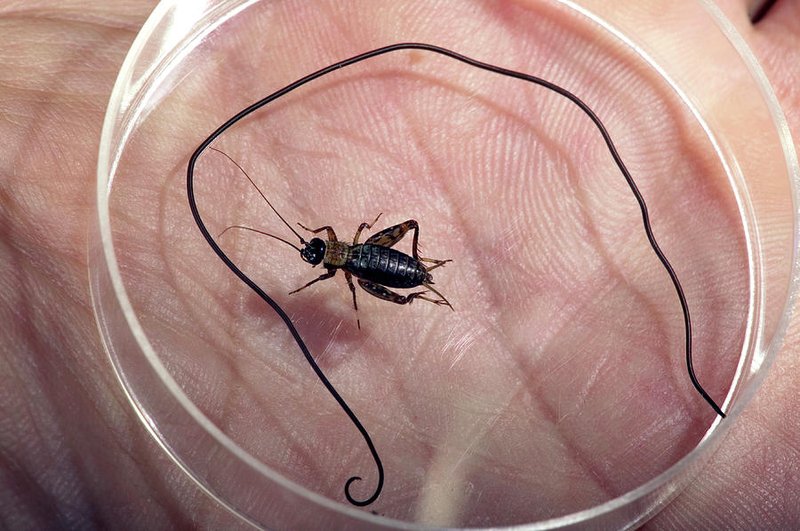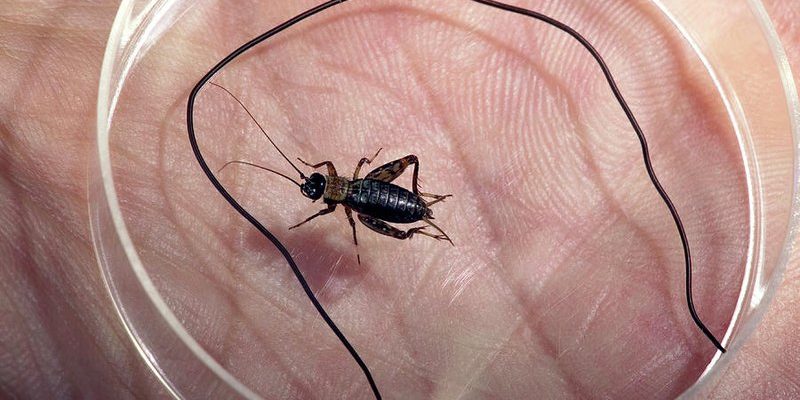
In the wild, hairworms typically manipulate their hosts—like grasshoppers or crickets—to jump into water, allowing the worms to emerge and live their adult lives. But can we replicate this captivating process in captivity? With scientific curiosity bubbling over, the question of whether these worms can be studied or farmed in a controlled setting is essential. Let’s explore what makes hairworms tick, their life cycle, and the considerations surrounding their captivity.
Understanding Hairworms: An Overview
Hairworms are long, slender parasites that can grow several inches in length and live in the bodies of several insect hosts. They belong to the phylum *Nematoda*, which consists of roundworms. These worms primarily rely on their hosts for nutrition and development. Once fully matured inside their host, hairworms need to escape to reproduce, often inducing their host to leap into water.
Here’s the thing: hairworms are not just fascinating because of their unique life cycle. They also have a remarkable ability to manipulate the behavior of their hosts. When the hairworm is ready to emerge, it releases chemicals that drive the host to seek water. This mind-twisting scenario raises numerous questions about behavior, evolution, and the intricacies of life in general.
Studying hairworms offers a window into the complex relationships between parasites and their hosts. By learning more about their biology and behavior, scientists can explore broader ecological interactions. Understanding these dynamics might help us grasp more complex biological concepts, such as evolution, host-parasite relationships, and even the potential for some parasitic relationships to influence ecosystem balance.
The Life Cycle of Hairworms
Hairworms have a remarkable life cycle that begins when the female lays eggs in the water. These eggs hatch into larvae, which then seek out their insect hosts. Once a larva penetrates the body of a host insect, it begins its journey to maturity. At this stage, it can live for weeks or even months while consuming nutrients from its host.
What’s striking is how the mature hairworm influences its host’s behavior. As it grows, the hairworm releases certain chemicals, compelling the insect to seek out water. You might picture a desperate grasshopper leaping into a pond, completely unaware that it paved the way for the hairworm’s emergence. The timing of this behavioral change is critical, as it directly impacts the worm’s survival and reproductive success.
After the hairworm finally emerges from its host, it enters the aquatic environment to find a mate and continue the life cycle. This remarkable journey is a compelling reason for scientists to study hairworms in captivity. It not only sheds light on their biology but also on the intricate relationships that exist within ecosystems.
Challenges of Captivity: Can Hairworms Be Farmed?
Here’s the thing: farming hairworms isn’t as straightforward as it might seem. While raising them in captivity could provide valuable insights into their biology and behavior, the complexities of their life cycle pose significant challenges. Replicating their natural environments and life stages requires careful consideration.
First, you’d need to establish a suitable habitat. Hairworms thrive in aquatic environments, so creating a tank that mimics their natural habitat is crucial. This will involve maintaining proper water quality, temperature, and food sources—usually the right kind of insect hosts. Without these, the hairworm’s life cycle can’t progress, making farming impractical.
Secondly, there’s the issue of ethical considerations. If we’re using living insects as hosts, it’s essential to ensure their welfare. Raising hairworms in captivity could lead to questions about the impact on host populations and the ecosystem. Finding a sustainable, ethical way to study them without disrupting natural habitats is a balance that requires careful thought.
How to Study Hairworms in Captivity
If you’re interested in studying hairworms in captivity, you’ll need to take a systematic approach. Start by researching their preferred environmental conditions. Collecting data on temperature, light, and water quality can help create the ideal habitat.
Next, focus on sourcing the right insect hosts. Since hairworms rely on specific insects to complete their life cycle, you’ll want to identify which species are suitable. It’s a delicate balance to maintain a host population while ensuring the health of hairworms. You might even consider reaching out to academic institutions or research labs for insight.
Once you’ve set up your habitat, observe and record their behavior. Look for changes in the insect hosts as they interact with hairworms. This process can be slow and requires patience, but documenting these interactions will contribute valuable knowledge to parasitology and ecology.
Potential Uses of Captive Hairworm Research
Studying hairworms can offer more than just curiosity; it opens doors to various applications. Understanding the mechanics of host manipulation could aid in pest control strategies, particularly in agricultural settings. If scientists can identify how hairworms influence host behavior, the knowledge might lead to innovative ways to manage pest populations.
Moreover, research on hairworms could contribute to our understanding of complex biological systems. They serve as a model organism to explore ecological dynamics, host-parasite interactions, and even evolutionary processes. By observing how different species interact, researchers can glean insights into environmental changes and the adaptability of organisms.
Additionally, the fascination with hairworms can draw interest to parasitology as a whole. By highlighting their unique life cycles and interactions, educators can inspire a new generation of scientists to delve into the mysteries of biology and ecology.
Hairworms are captivating creatures that challenge our understanding of life cycles and ecological relationships. While the prospect of studying or farming these worms in captivity comes with its challenges, the potential benefits are enormous. From managing pest populations to exploring the intricacies of parasitology, hairworms have much to teach us.
As our understanding of these unique organisms deepens, we might discover new applications benefiting agriculture, ecology, and science as a whole. So, whether you’re a budding scientist, an insect enthusiast, or just someone with a curiosity for the strange and wonderful, hairworms remind us of the fascinating interconnections in the natural world. Who knows? Maybe you’ll be inspired to explore their mysteries further!

